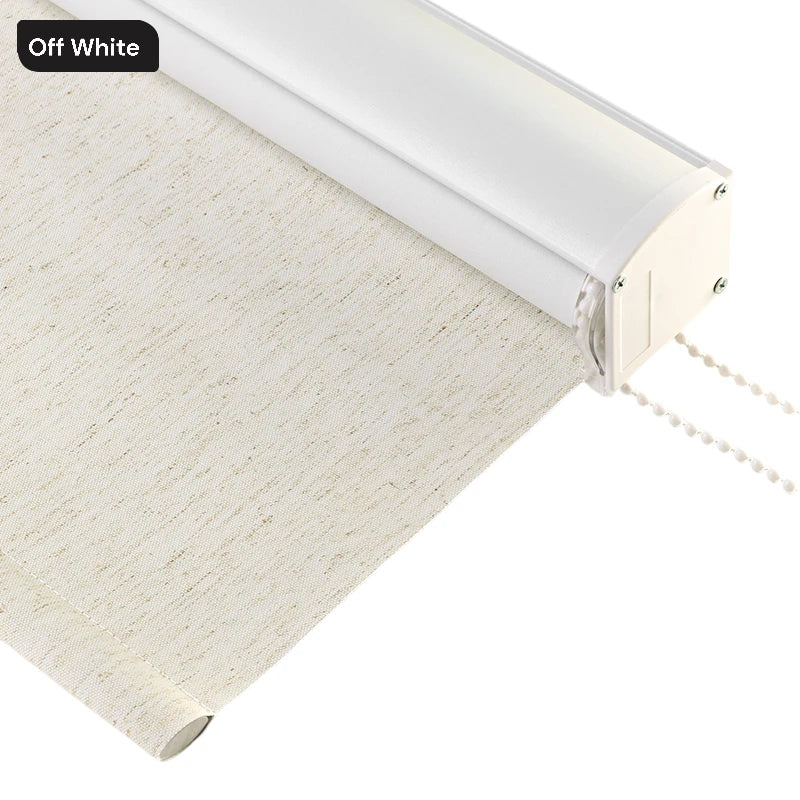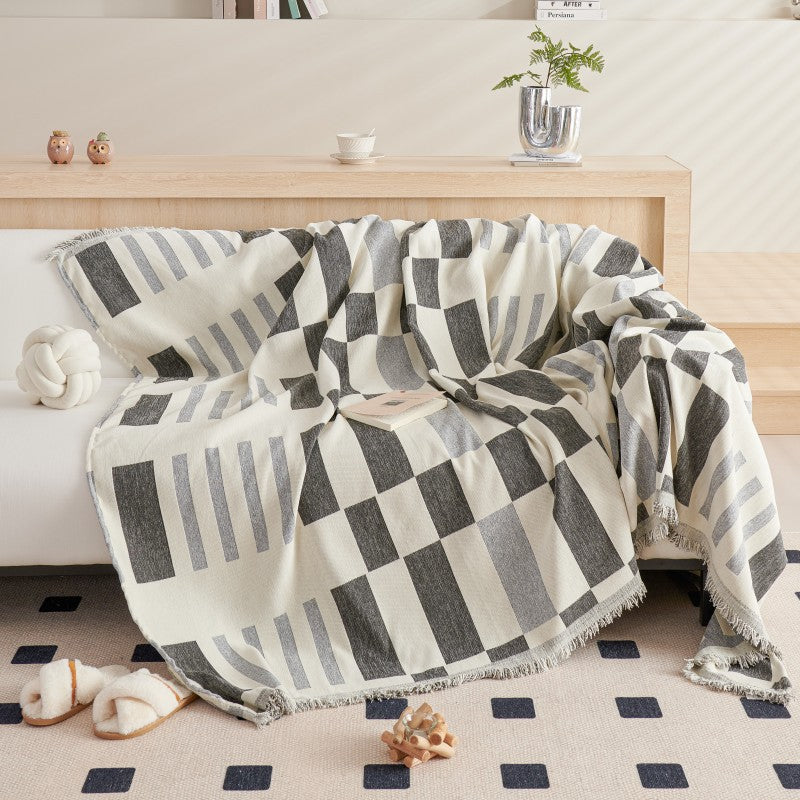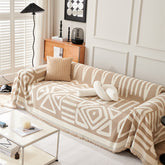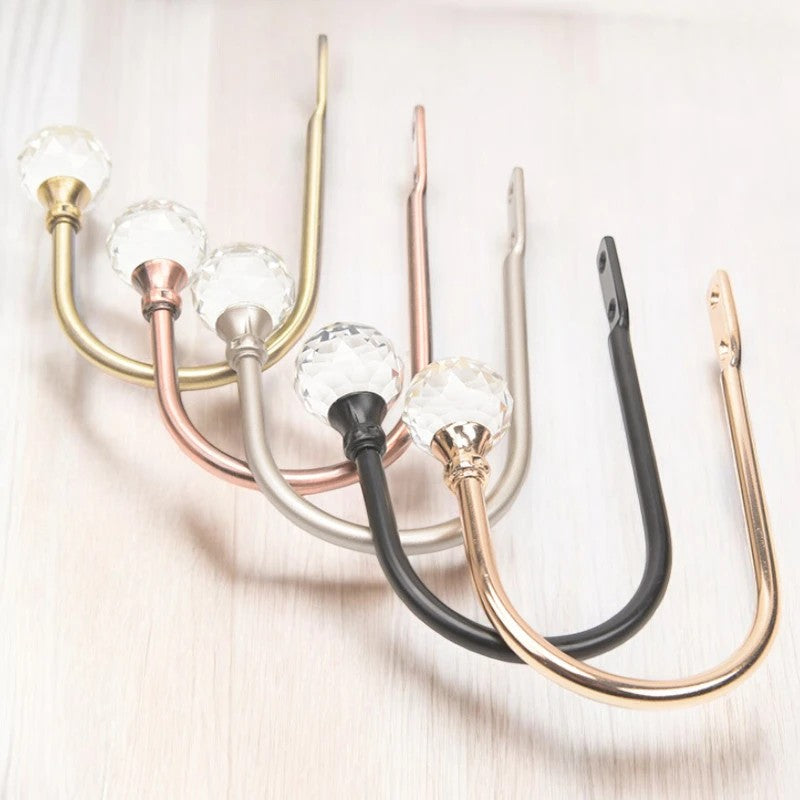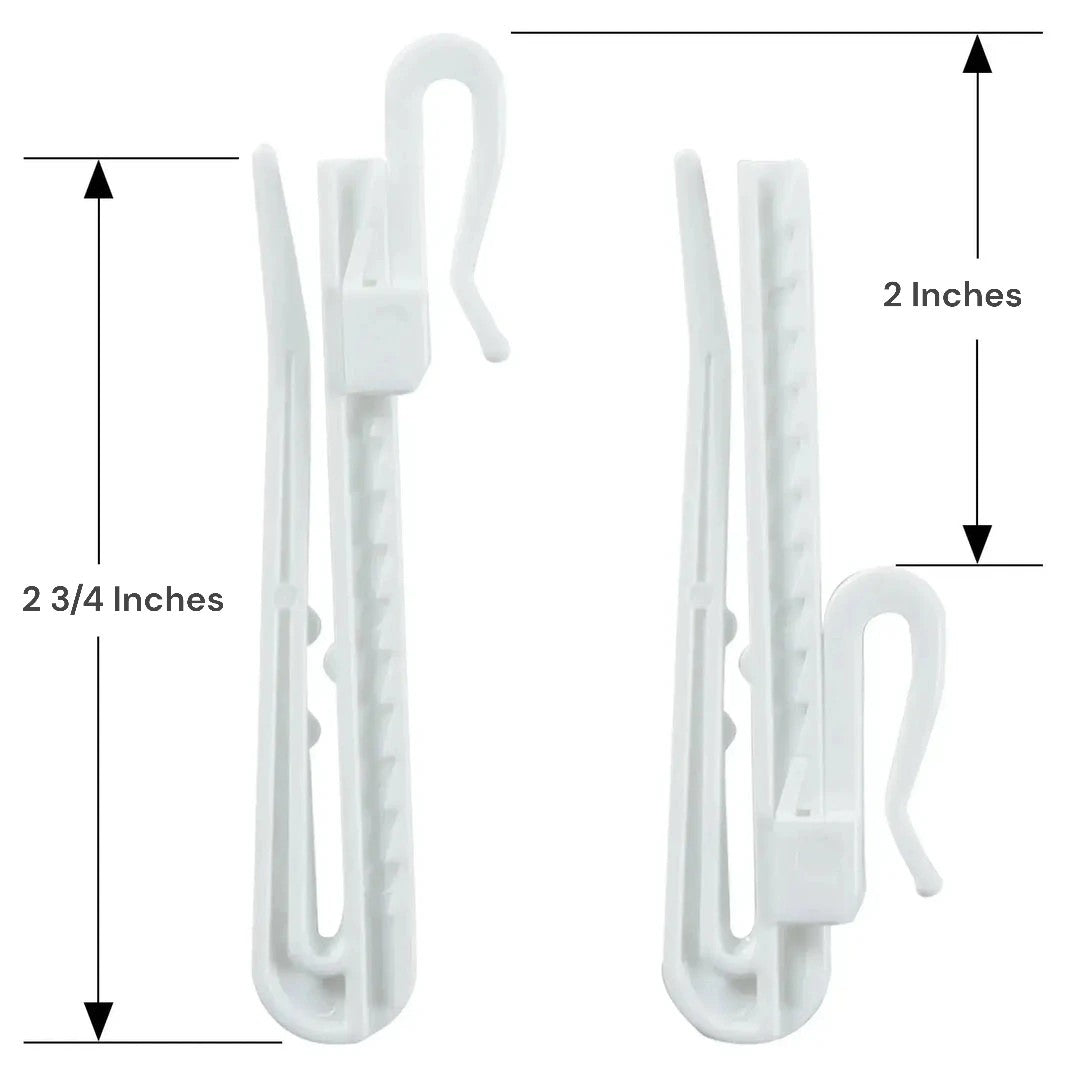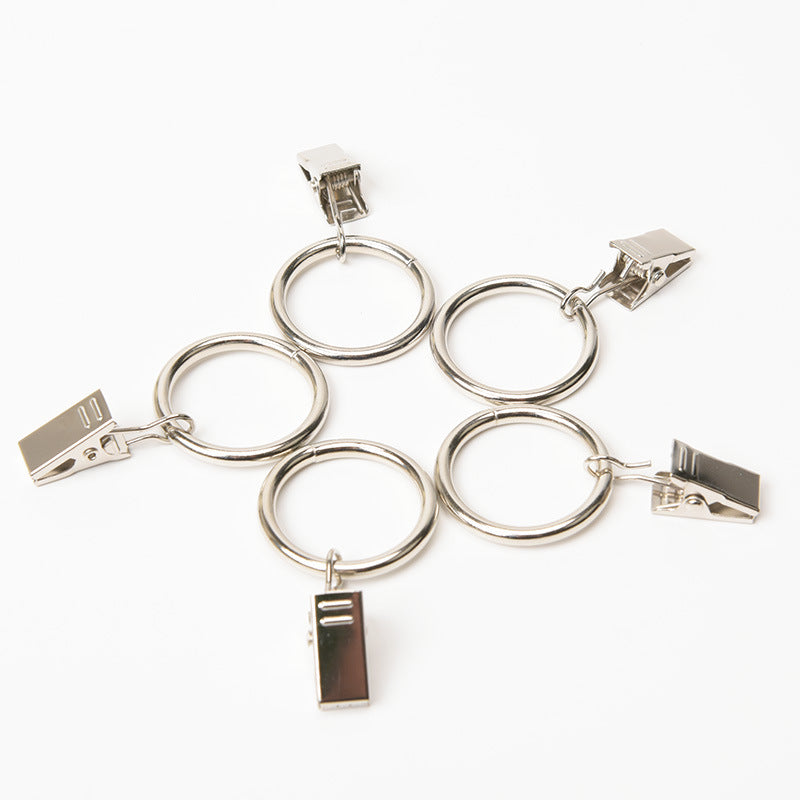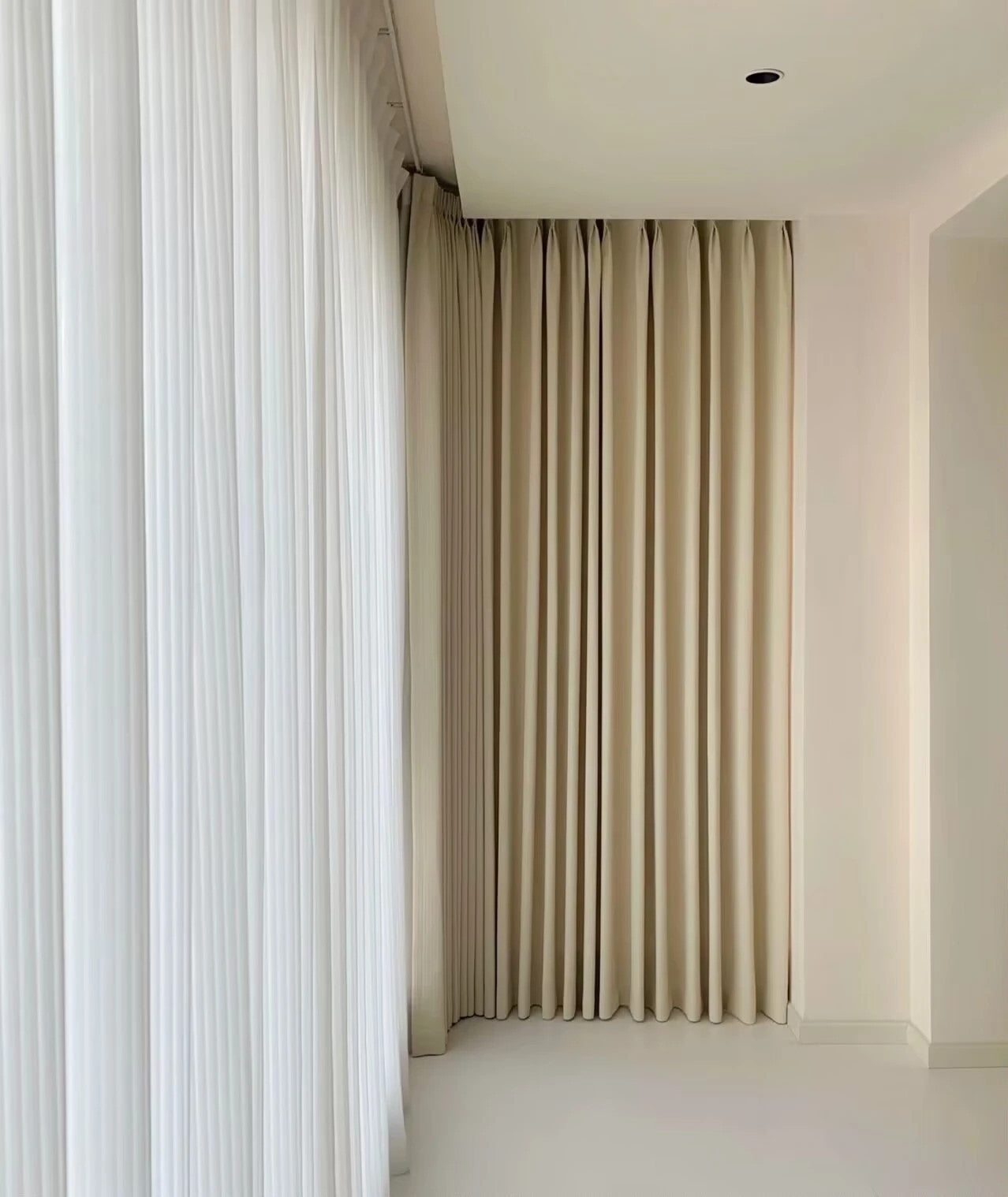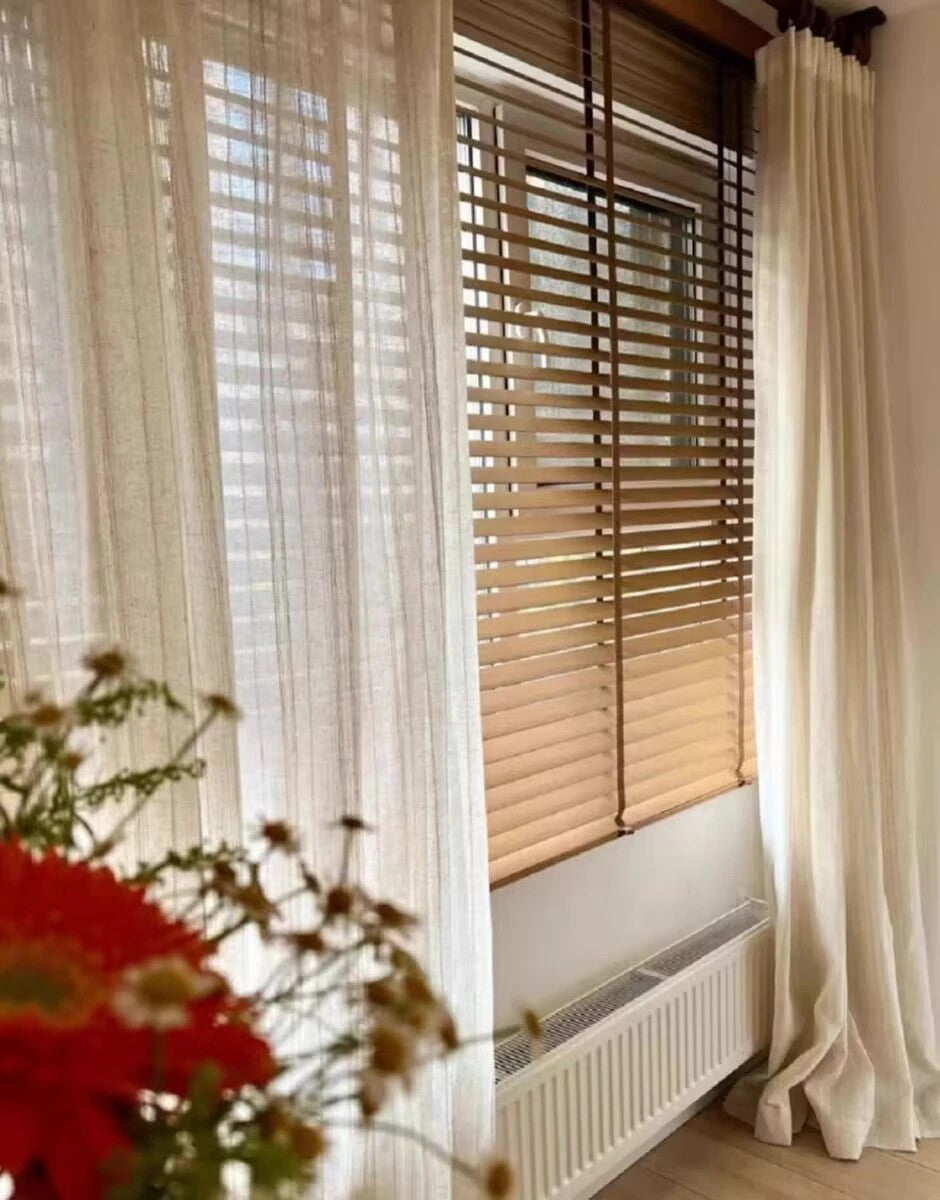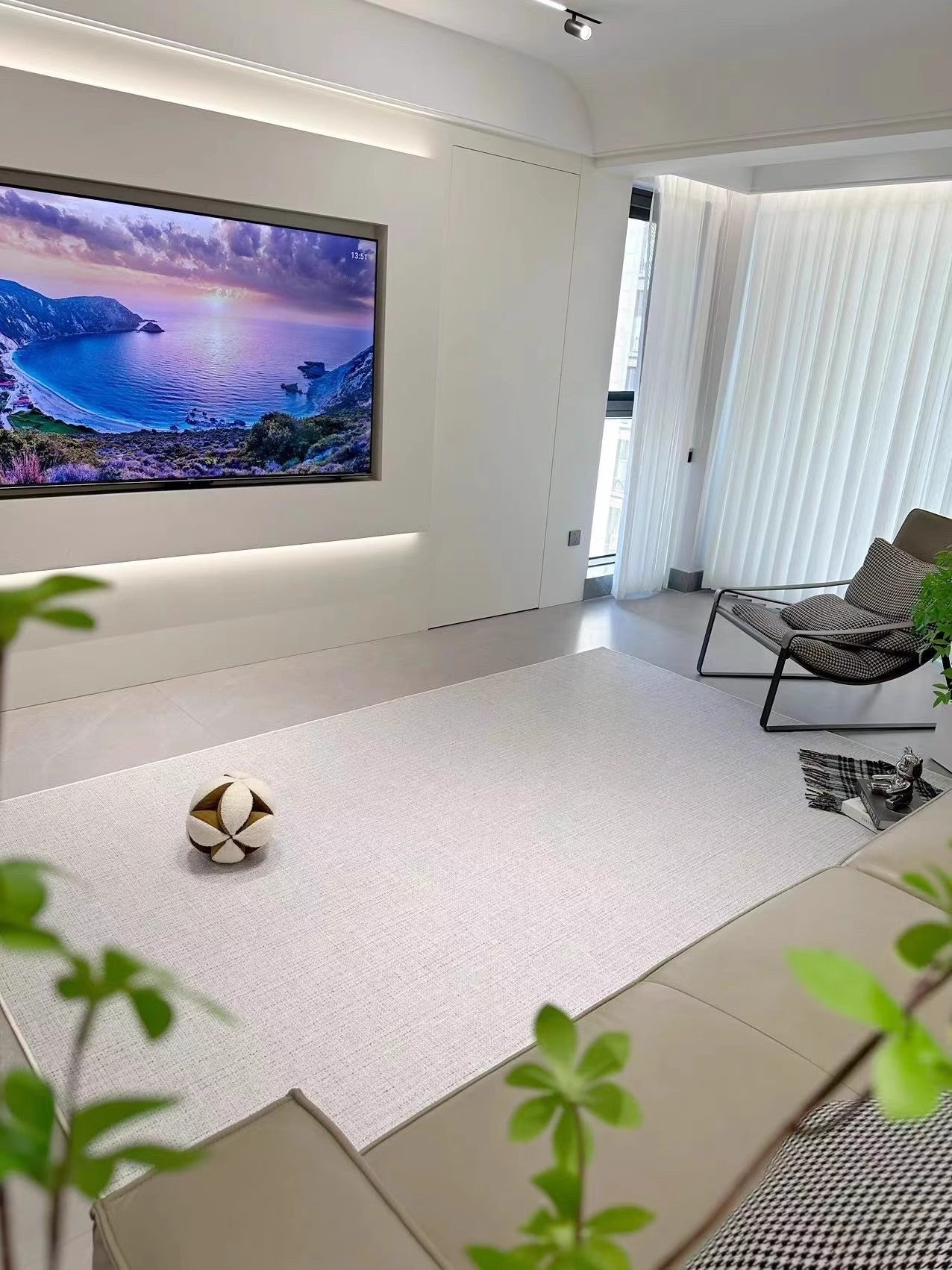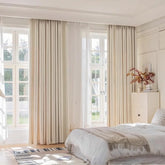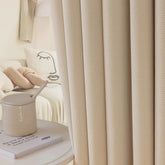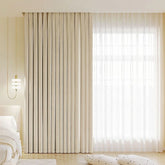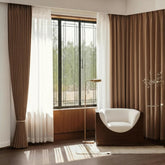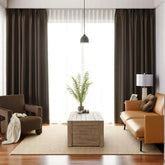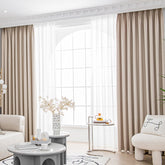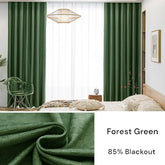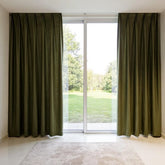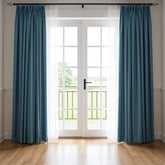How to Choose the Right Fabric for Custom Curtains?
When it comes to designing your home, custom curtains can make a significant impact on the overall look and feel of a room. One crucial aspect to consider when selecting custom curtains is the fabric. The fabric you choose can affect the functionality, durability, and aesthetic appeal of your curtains. In this article, we will explore the importance of choosing the right fabric for your custom curtains and provide a comprehensive guide to help you make an informed decision.
Consider the Room's Function and Style
Before diving into the world of fabric options, it's essential to assess the room's purpose and ambiance. Consider the function of the room and the desired style and mood you want to create. Is it a formal living room that requires an elegant and sophisticated look? Or perhaps a cozy bedroom that calls for a soft and calming atmosphere? Understanding the room's function and style will help you narrow down your fabric choices.
Assessing the room's purpose and ambiance
Start by evaluating how the room will be used. Is it a high-traffic area, like a living room or kitchen, where durability is crucial? Or is it a bedroom where privacy and light control are more important? Understanding the purpose of the room will guide you in selecting the right fabric.
Identifying the desired style and mood
Consider the overall style and mood you want to achieve in the room. Do you prefer a modern and sleek look, or are you more inclined towards a traditional and cozy feel? The fabric you choose should complement the room's style and contribute to the desired mood.
Understanding Different Fabric Types
Now that you have a clear understanding of the room's function and style, let's delve into the different fabric types available for custom curtains. There are two main categories: natural fabrics and synthetic fabrics.
Natural fabrics
Natural fabrics are derived from plant or animal sources and offer a luxurious and timeless appeal. Here are three popular natural fabric options:
- Cotton: Cotton is a versatile and breathable fabric that works well in various room settings. It is easy to maintain and comes in a wide range of colors and patterns.
- Linen: Linen is known for its crisp and airy texture, making it ideal for creating a relaxed and casual atmosphere. It is highly durable and provides excellent light filtration.
- Silk: Silk exudes elegance and sophistication. It has a luxurious sheen and drapes beautifully, adding a touch of glamour to any room. However, silk requires more delicate care and may not be suitable for high-traffic areas.
Synthetic fabrics
Synthetic fabrics are man-made materials that offer durability and affordability. Here are three common synthetic fabric options:
- Polyester: Polyester is a popular choice for its durability and resistance to wrinkles and fading. It is available in a wide range of colors and patterns, making it easy to find a style that suits your needs.
- Nylon: Nylon is known for its strength and durability. It is resistant to mildew and is an excellent choice for areas with high humidity, such as bathrooms or kitchens.
- Rayon: Rayon is a versatile fabric that mimics the look and feel of natural fibers. It is soft, lightweight, and drapes well, making it a popular choice for curtains.
Evaluating Fabric Durability
When choosing fabric for custom curtains, it's essential to consider the curtain's location and usage. Different areas of your home may require different levels of durability. For example, curtains in a high-traffic area like the living room may need to withstand more wear and tear compared to curtains in a less frequented space like a guest bedroom.
Assessing the fabric's strength and resistance to wear and tear is crucial. Look for fabrics with a high thread count, as they tend to be more durable. Additionally, consider the fabric's maintenance requirements. Some fabrics may require professional cleaning or special care, while others can be easily machine washed.
Understanding fabric maintenance requirements
Each fabric has its own maintenance requirements. Some fabrics may require dry cleaning, while others can be machine washed. Consider your lifestyle and how much time and effort you are willing to invest in maintaining your curtains. If you prefer low-maintenance options, look for fabrics that are easy to clean and resistant to fading and staining.
Examining Light Control and Privacy
Another crucial factor to consider when choosing fabric for custom curtains is light control and privacy. The amount of light you want to filter into a room and the level of privacy you desire will influence your fabric choice.
Determining the desired level of light filtration
Consider how much natural light you want to allow into the room. If you prefer a bright and airy space, sheer or semi-sheer fabrics will provide a soft and diffused light. On the other hand, if you want to block out most of the light, blackout curtains are the way to go. They are made with special lining that prevents light from passing through.
Assessing the need for privacy
Privacy is another important consideration, especially for bedrooms and bathrooms. Thicker fabrics like velvet or heavier drapes offer better privacy by blocking the view from outside. Sheer or semi-sheer fabrics, on the other hand, allow more visibility from both inside and outside the room.
Exploring different fabric opacities
Fabric opacity refers to how much light can pass through the fabric. Here are some common fabric opacities to consider:
- Sheer curtains: Sheer fabrics allow the most light to pass through and provide minimal privacy.
- Blackout curtains: Blackout fabrics block out almost all light and offer maximum privacy.
- Semi-sheer curtains: Semi-sheer fabrics strike a balance between light filtration and privacy.
Considering Thermal Insulation
Thermal insulation is an essential consideration, especially if you live in an area with extreme temperatures. The right fabric can help regulate the room's temperature and improve energy efficiency.
Assessing the room's temperature needs
Consider the room's temperature needs. Do you want to keep the room cool during hot summer months or retain warmth during the winter? Fabrics with insulating properties can help achieve these goals.
Understanding the insulating properties of different fabrics
Some fabrics, like velvet and wool, have natural insulating properties and can help keep the room warm. On the other hand, lightweight fabrics like cotton and linen allow for better airflow and can help keep the room cool.
Choosing fabrics suitable for energy efficiency
If energy efficiency is a priority, look for fabrics with thermal lining or opt for double-layered curtains. These curtains provide an extra barrier against heat or cold, reducing the need for excessive heating or cooling.
Evaluating Color and Pattern
The color and pattern of your custom curtains play a significant role in the overall design of the room. They can enhance the existing color scheme, create visual interest, or serve as a focal point.
Coordinating with the room's color scheme
Consider the existing color scheme of the room and choose a fabric color that complements or contrasts with it. If you want the curtains to blend seamlessly with the room, opt for a fabric color that matches the wall or furniture. On the other hand, if you want to make a statement, choose a bold color that adds a pop of contrast.
Considering the impact of patterns on the overall design
Patterns can add depth and visual interest to a room. Consider the overall design style and choose a pattern that complements it. For example, floral or paisley patterns work well in traditional or bohemian-inspired spaces, while geometric patterns are perfect for modern and contemporary settings.
Exploring different color and pattern options
There are endless color and pattern options available for custom curtains. Whether you prefer solid colors, stripes, or intricate designs, there is a fabric out there to suit your taste. Take the time to explore different options and find a fabric that resonates with your personal style.
Assessing Fabric Maintenance
Understanding the fabric's care instructions and maintenance requirements is crucial for ensuring the longevity of your custom curtains. Different fabrics have different cleaning and maintenance needs.
Understanding fabric care instructions
Before purchasing a fabric, familiarize yourself with its care instructions. Some fabrics may require dry cleaning, while others can be machine washed. Make sure you are comfortable with the recommended care routine and that it aligns with your lifestyle.
Considering ease of cleaning and maintenance
If you prefer low-maintenance options, look for fabrics that are easy to clean and maintain. Fabrics like polyester and nylon are generally more resistant to stains and fading, making them suitable for high-traffic areas or households with children and pets.
Evaluating fabric's resistance to fading and staining
Consider the fabric's resistance to fading and staining. Fabrics with a high colorfastness rating are less likely to fade over time, ensuring that your curtains retain their vibrant appearance. Additionally, look for fabrics with stain-resistant properties, especially if you anticipate spills or accidents.
Budget Considerations
Setting a budget for your custom curtains is essential. While it's tempting to splurge on luxurious fabrics, it's important to find a balance between quality and affordability.
Exploring cost-effective fabric options
If you have a limited budget, there are plenty of cost-effective fabric options available. Synthetic fabrics like polyester and rayon are generally more affordable than natural fabrics like silk or linen. Additionally, consider purchasing fabric remnants or exploring discounted options to save on costs.
Balancing quality and affordability
While it's important to stick to your budget, it's equally crucial to prioritize quality. Investing in high-quality fabrics may cost more upfront but can save you money in the long run by ensuring durability and longevity. Strike a balance between quality and affordability to find the best fabric for your custom curtains.
Seeking Professional Advice
If you're feeling overwhelmed or unsure about choosing the right fabric for your custom curtains, don't hesitate to seek professional advice. Interior designers or curtain specialists can provide valuable insights and help you navigate through the vast array of fabric options.
Consulting with interior designers or curtain specialists
Interior designers or curtain specialists have extensive knowledge and experience in selecting fabrics for custom curtains. They can guide you in choosing the right fabric based on your specific needs and preferences. Schedule a consultation to discuss your requirements and gain expert advice.
Utilizing online resources and fabric sample services
If consulting with professionals is not feasible, take advantage of online resources and fabric sample services. Many websites offer fabric samples that you can order to assess the look and feel of the fabric before making a decision. This allows you to see how the fabric complements your existing decor and helps you make an informed choice.
Gathering recommendations from trusted sources
Reach out to friends, family, or trusted sources who have recently purchased custom curtains. They can provide recommendations based on their own experiences and help you narrow down your options.
Considering Environmental Impact
As sustainability becomes increasingly important, it's worth considering the environmental impact of the fabric you choose for your custom curtains.
Exploring eco-friendly fabric options
Look for fabrics that are made from sustainable materials or have eco-friendly production processes. Organic cotton, bamboo, and hemp are examples of eco-friendly fabric options that are grown without the use of harmful chemicals.
Assessing the fabric's production process and sustainability
Research the fabric's production process and assess its sustainability. Consider factors such as water usage, energy consumption, and waste management. Opt for fabrics that prioritize environmentally friendly practices.
Choosing fabrics with low environmental impact
Choose fabrics that have a low environmental impact throughout their lifecycle. Look for certifications such as Global Organic Textile Standard (GOTS) or OEKO-TEX Standard 100, which ensure that the fabric meets specific environmental and social criteria.
Testing Fabric Samples
Before making a final decision, it's always a good idea to request fabric samples from suppliers. This allows you to assess the fabric's texture, weight, and drape, ensuring that it meets your expectations.
Requesting fabric samples from suppliers
Contact your chosen suppliers and request fabric samples. Most suppliers are happy to provide small swatches that you can examine in person.
Evaluating fabric texture, weight, and drape
When you receive the fabric samples, pay attention to the texture, weight, and drape of each fabric. Consider how it feels to the touch and how it hangs when draped. This will give you a better idea of how the fabric will look and feel as curtains.
Assessing fabric samples under different lighting conditions
Lastly, assess the fabric samples under different lighting conditions. Natural light and artificial light can affect the appearance of the fabric. Place the samples near windows and under different types of lighting to see how they look in various settings.
Considering Allergies and Sensitivities
If you or your family members have allergies or sensitivities, it's crucial to choose fabrics that are hypoallergenic and free from potential allergens.
Identifying potential allergens in fabrics
Some fabrics, such as wool or certain synthetic materials, can trigger allergies or sensitivities in some individuals. If you or your family members have known allergies, avoid fabrics that may contain potential allergens.
Choosing hypoallergenic fabric options
Opt for hypoallergenic fabric options like organic cotton or bamboo, which are less likely to cause allergic reactions. These fabrics are made without the use of harsh chemicals and are gentle on the skin.
Considering the needs of individuals with sensitivities
Individuals with sensitivities may have specific requirements when it comes to fabric choices. Consider their needs and preferences to ensure that the fabric you choose is comfortable and safe for everyone in the household.
Making the Final Decision
After considering all the factors discussed above, it's time to make the final decision. Weigh the importance of each factor based on your specific needs and priorities.
Weighing the importance of each factor discussed
Consider which factors are most important to you. Is durability your top priority, or do you value light control and privacy more? Understanding your priorities will help you make a more informed decision.
Prioritizing the desired qualities in the fabric
Based on your priorities, prioritize the desired qualities in the fabric. Create a checklist of the essential features you want in your custom curtains, such as durability, light control, or eco-friendliness.
Making an informed decision based on personal preferences and needs
Ultimately, the decision comes down to personal preferences and needs. Consider your style, budget, and the overall vision you have for your space. Choose a fabric that aligns with your preferences and meets your specific requirements.
Conclusion
Choosing the right fabric for your custom curtains is a crucial step in creating a beautiful and functional space. By considering factors such as the room's function and style, fabric durability, light control and privacy, thermal insulation, color and pattern, fabric maintenance, budget, environmental impact, allergies and sensitivities, and testing fabric samples, you can make an informed decision that enhances the overall design of your home. Take the time to explore different fabric options, seek professional advice if needed, and prioritize the qualities that matter most to you. With the right fabric, your custom curtains will not only be visually appealing but also functional and long-lasting.
At Dolcewe, we understand the importance of selecting the right fabric for your curtains. Our curated custom curtains collection offers a variety of fabric types, each crafted with care to elevate your space. From enhancing the room's ambiance to optimizing light control and insulation, our curtains excel in both beauty and functionality. Embrace the luxury of personalized design and exceptional quality today.
FAQ
Q: How do I determine the right fabric for my custom curtains?
A: To determine the right fabric for your custom curtains, consider factors such as the room's function and style, fabric durability, light control and privacy, thermal insulation, color and pattern, fabric maintenance, budget, environmental impact, allergies and sensitivities, and testing fabric samples. Assessing these factors will help you make an informed decision based on your specific needs and preferences.
Q: What are some eco-friendly fabric options for custom curtains?
A: Some eco-friendly fabric options for custom curtains include organic cotton, bamboo, and hemp. These fabrics are made from sustainable materials and have a lower environmental impact compared to conventional fabrics.
Q: How can I test fabric samples for my custom curtains?
A: To test fabric samples for your custom curtains, request samples from suppliers and evaluate the fabric's texture, weight, and drape. Additionally, assess the fabric samples under different lighting conditions to see how they look in various settings.
Q: Are there hypoallergenic fabric options for custom curtains?
A: Yes, there are hypoallergenic fabric options for custom curtains. Fabrics like organic cotton and bamboo are less likely to cause allergic reactions as they are made without the use of harsh chemicals and are gentle on the skin.
Q: How do I make a final decision on the fabric for my custom curtains?
A: To make a final decision on the fabric for your custom curtains, weigh the importance of each factor discussed, prioritize the desired qualities in the fabric, and make an informed decision based on your personal preferences and needs. Consider factors such as durability, light control, privacy, style, budget, and environmental impact to find the fabric that best suits your requirements.



